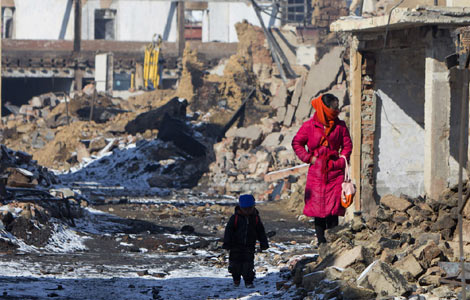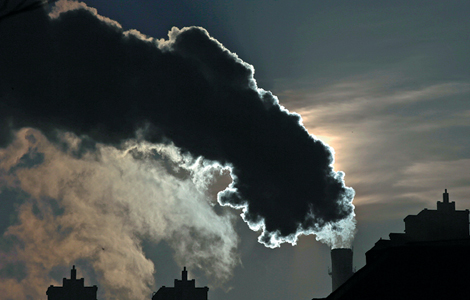The truth about skyscrapers
Updated: 2014-01-21 07:57
(China Daily)
|
||||||||
China had 470 skyscrapers in 2012, with 332 more under construction, which accounted for 87 percent of the global total. The phenomenon of building such a large number of skyscrapers deserves special attention, says an article on gmw.cn. Excerpts:
Many people say there is no need to build so many skyscrapers, and their contention is not groundless. According to a report on high-rise buildings, on average a skyscraper in the US has an output value of 143.1 billion yuan ($23.65 billion) in the tertiary industry while that in China yields only 43.6 billion yuan.
Skyscrapers have been built across China at random. For example, the world's first five-star skyscraper hotel built in a village in China is suffering operational loss and needs villagers to occasionally occupy rooms to "stimulate domestic demand".
It's true that the huge number of skyscrapers in China pose a problem. But people who oppose the trend spurred by the country's urbanization drive tend to go to the other extreme, saying that there is no need for skyscrapers at all. Whether a city has the need for skyscrapers or whether farmers should live in tall buildings should be decided by social reality rather people's subjective assumption.
On one hand, skyscrapers are built to save resources and concentrate production elements in one place. For instance, the cluster of high-rise buildings in New York City includes not only the world's most influential banks, and insurance and securities companies, but also energy giants. On the other hand, during their economic development, every country, including those in the West and Japan and South Korea, went through a stage when they had to showcase their economic strength through skyscrapers.
The pursuit of building skyscrapers could be disastrous. But if building skyscrapers is part of a well-thought-out plan and meets realistic demands, people should not criticize it.

 Commemorations held to honor Martin Luther King Jr.
Commemorations held to honor Martin Luther King Jr.
 Thrillseeker enjoys the hammock in the sky
Thrillseeker enjoys the hammock in the sky
 Babies baptised during a mass ceremony
Babies baptised during a mass ceremony
 Winter cultural festival opens in Xinjiang
Winter cultural festival opens in Xinjiang
 Air travel to Taiwan continues to take off
Air travel to Taiwan continues to take off
 Panda cub in Washington makes her public debut
Panda cub in Washington makes her public debut
 Spring Festival preparations across China
Spring Festival preparations across China
 Premier vows to help startups
Premier vows to help startups
Most Viewed
Editor's Picks

|

|

|

|

|

|
Today's Top News
US commemorates Martin Luther King Jr.
Human spread of H7N9 'sporadic'
US diplomats off to 'quench fire'
Dropping 'no-war' pledge a part of Abe's strategy
Gang busted for illegal gender selection testing
China software to rival Android, iOS
Xi writes to Chinese in German
Premier vows to help startups
US Weekly

|

|






